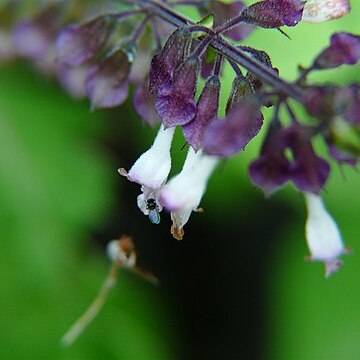A softwood herb. It grows up to 60 cm tall. It has a woody rootstock that contains starch. The stems are erect, slender and 4 sided. The leaves are simple and in opposite pairs. They are 4-8 cm long by 1-3 cm wide. They have rounded teeth along the edge. The flowers are in rings along the stalk. There are 10-20 of these with 4-8 flowers. The nutlets are oval and 1.5 mm long by 1.2 mm wide.
An attractive erect aromatic perennial herb about 11/2-2 ft. high
Inflorescence usually pink
Flowers white or pink
Calyx accrescent

